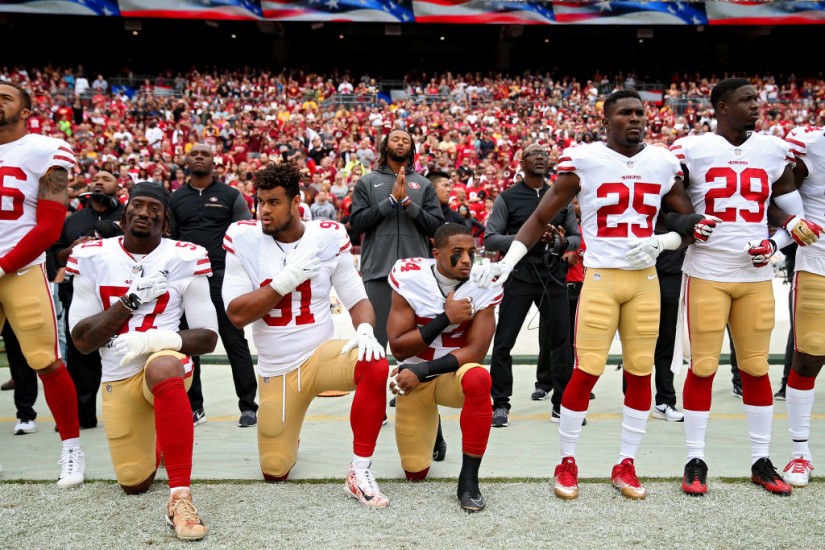Over the Thanksgiving holiday, conservative firebrand Tomi Lahren tweeted a photograph of American soldiers wading ashore on D-Day. Photoshopped kneeling behind them, rather than charging the beach, was former San Francisco 49ers quarterback Colin Kaepernick. “Food for thought,” Lahren commented, as if merely mulling the disjunction between these images.
One of the many unexamined assumptions encoded in Lahren’s tweet is that professional football ought to reflect America at its most patriotic, even embracing jingoism. Your typical player, we’re prodded to infer, should hop out alongside the other grunts by standing for the national anthem and playing the game — an act that Lahren, in a familiar rhetorical slippage, equates with going to war.
However clumsy, Lahren’s vision of where the NFL should stand politically is nothing new. In fact, the league itself cultivated this expectation throughout its rise to the top of the American sporting pyramid in the 1960s. It arranged halftime military flyovers and released classic NFL Films productions in which “voice of God” announcer John Facenda growled “search and destroy” as linebackers flattened hapless quarterbacks.
But this marketing obscured reality. Football players fought in World War II, but only because the NFL lacked the cultural authority to limit their contribution to the war effort. By Vietnam, even as it was pounding the drums of patriotism, the NFL exerted soft power to shield its players from the draft, instead dispatching them on tours that inadvertently exposed the distance between celebrity football players and the values the league claimed to be promoting.
